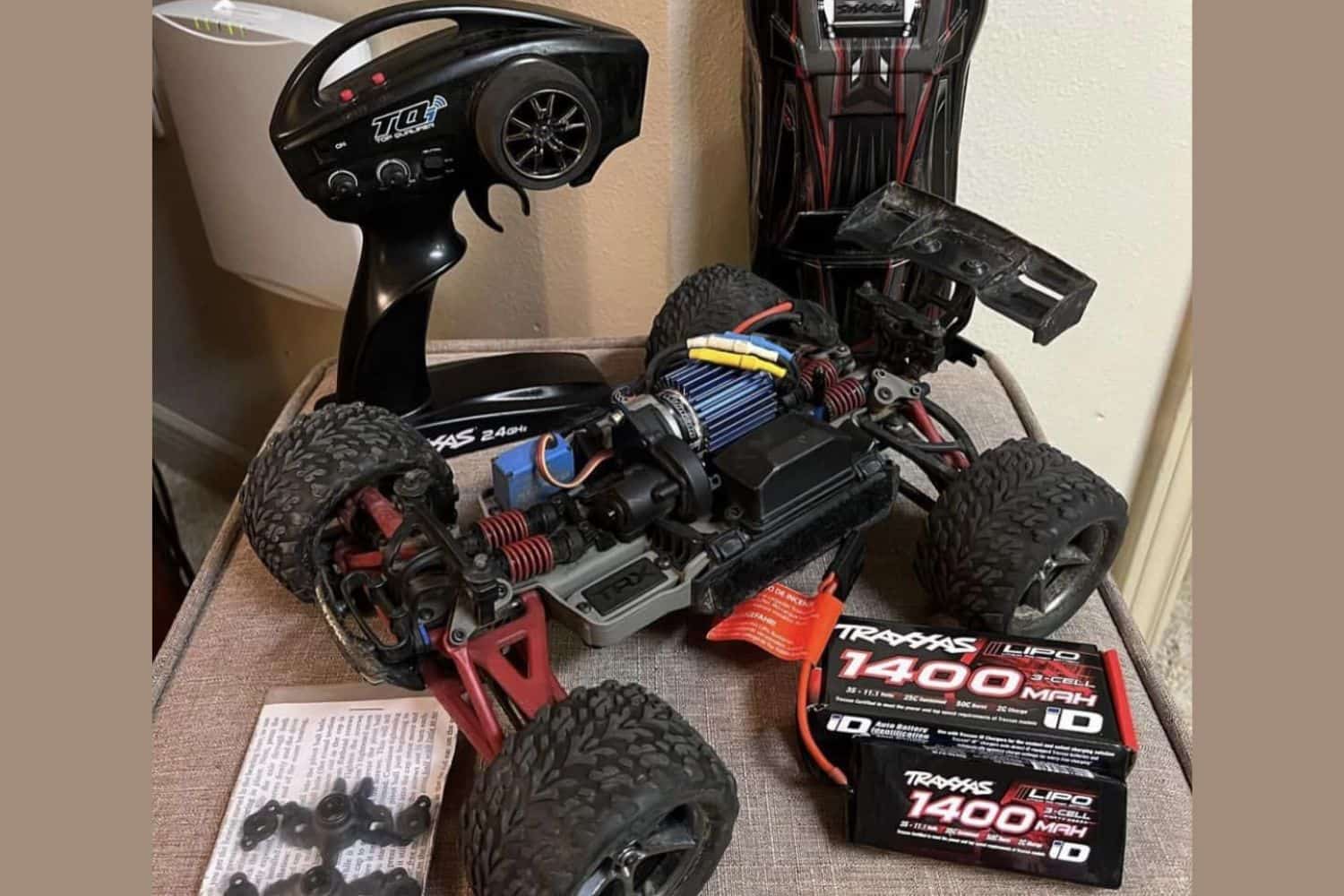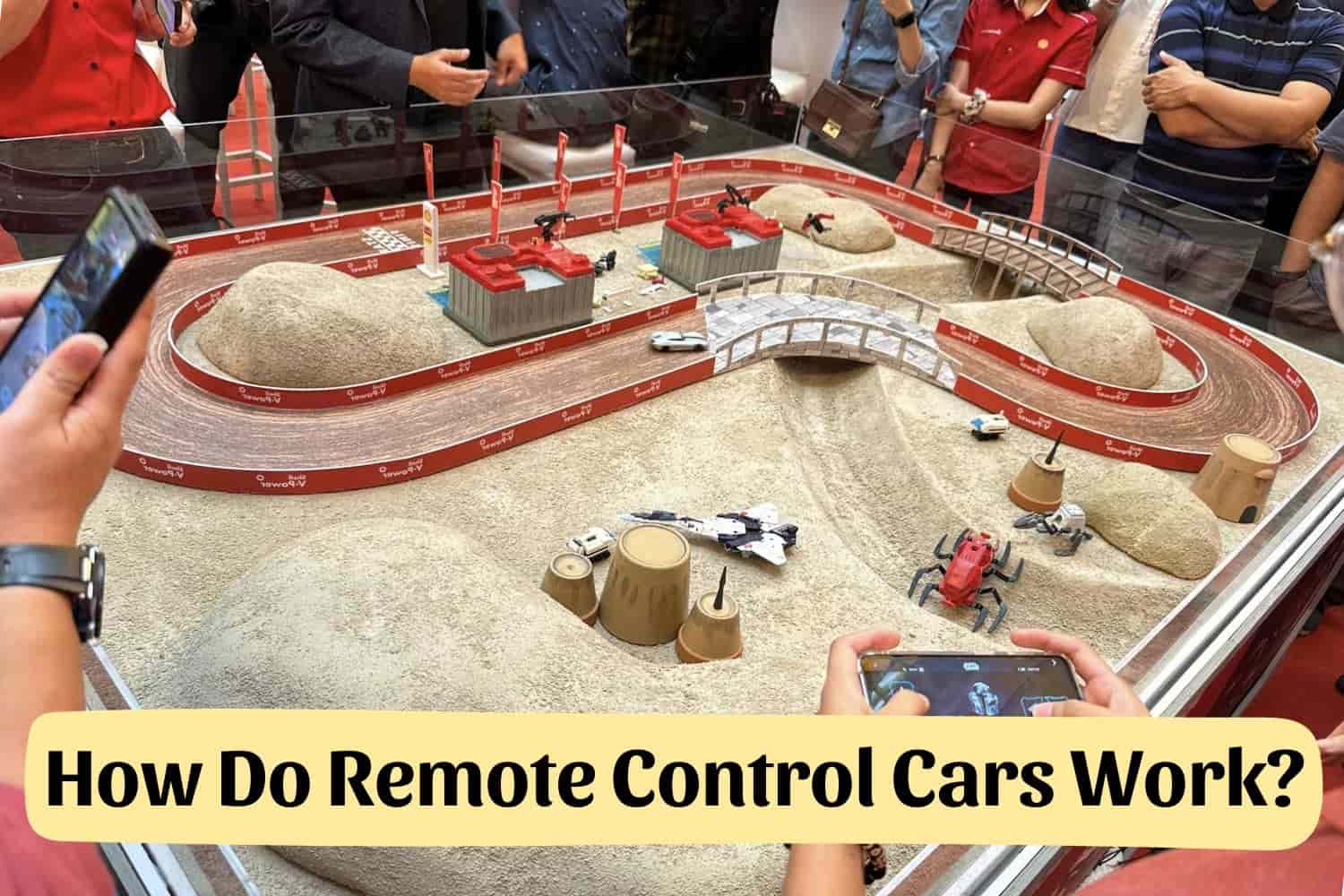Want to know how do remote control cars work? Learn all about an RC car’s different components and functions that make it move quickly and accurately.
How Do Remote Control Cars Work?
If you have ever found yourself wondering how those neat remote-controlled cars zip around so easily, this post is for you! For kids and adults alike, the allure of having a miniature vehicle that can navigate its course—at your command—is undeniable.
Technology has come a long way since remote control (RC) vehicles were invented — making these devices safer than ever before. So let’s take an in-depth look into exactly – How do remote control cars work?
We’ll delve into everything from the basics of components required to make them operate, to some of the most innovative technologies used in modern-day models. With this comprehensive guide, you’ll be ready to cruise with your shiny new RC car in no time!
Essential Components of RC Cars: Power, Control, and Performance

No RC car can run without four crucial components. A power source, a transmitter, a motor, and a receiver are the basic elements that ensure proper functionality. While there may be variations in technology and quality, these components are non-negotiable for a working RC car.
Power Source: The Heart of the RC Car
Without a reliable power source, an RC car is unable to function. Depending on the car’s complexity, power sources can range from rechargeable batteries to gas-powered engines. Electrically powered cars are also gaining popularity, but they require a higher budget and skill level.
Motor: The Powerhouse Behind the Movement
The motor is the powerhouse that drives your RC car. It allows you to steer and control your vehicle’s movements. The complexity of the motor depends on the sophistication of your car. Advanced models often require multiple motors for more extensive functionality.
Transmitter: Your Key to Control
The transmitter is your ultimate control center. It sends radio waves to the receiver in your car, allowing you to dictate its actions. Powered by batteries, the transmitter features keys or buttons that send signals, giving you full control over your RC car.
Receiver: The Gateway to Control
The receiver is the antenna on your RC car that picks up signals from the transmitter. Whether you’re playing with a remote-controlled toy or racing a professional RC car, every vehicle will have a receiver antenna. Half of the receiver is in the antenna, while the other half is incorporated into the car’s circuit board. This tandem enables you to stay in full control of the car’s movements.
Understanding the fundamental components of an RC car is crucial for a successful and enjoyable driving experience. By investing in quality power sources, advanced motors, reliable transmitters, and efficient receivers, you can unleash the full potential of your RC car.
How Do Remote Control Cars Work?
RC cars are controlled remotely using a radio wave-based remote control. When you press a button on the remote, it sends specific electrical pulses to the RC car’s receiver, which corresponds to the action you want the car to take.
The transmitter is powered by a 9-volt battery and sends radio waves to the receiver, providing power to all the working parts of the car. The receiver recognizes the signals from the transmitter and activates the motor by sending the signals to the circuit.
The circuit board acts as a central hub, directing commands to specific parts of the car. It translates the signals into actions, allowing the motor to perform the desired tasks.
Most RC car controllers have six control options, each with a specific number of pulse sequences. These options include: forward-16 pulses, reverse-40 pulses, forward right-34 pulses, forward left-28 pulses, reverse right-46 pulses, and reverse left-52 pulses.
Conclusion
In conclusion, constructing and using a remote control car can be achieved by anyone with the right materials.
Remote control cars come in all shapes and sizes, but the basics of controlling them remain the same–a handheld device is used to send signals to a receiver which interprets those signals into movement for the car.
Whether you want to build your own from scratch or buy a pre-made kit, these toys bring tons of fun for hobbyists of all ages.
Since they are available with different-sized motors and batteries with varying capabilities, it’s easy to find something that matches your skill level.
Have fun exploring all the possibilities these cars bring! So what are you waiting for? Try building or buying a remote control car today!
Thanks for reading our article How Do Remote Control Cars Work? If you want to know more information, visit our website here.
Read more:

